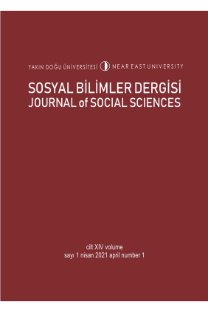Turkey is at a crossroad in the age of globalization: Testing the role of Turkey's trade competitiveness in her region
1980’den sonra Türkiye, açık ve rekabetçi bir ekonomik yapı kurmak için önemli kararlar almış ve bunun sonucu bölgede Türkiye’nin rolü de artmıştır. Dünyada ve bölgesinde Türk ekonomisinin artan önemini düşündüğümüzde, bu çalışma Türkiye’nin bölge ülkeleri için, rekabet ve diğer ticaret performans ölçümleri açısından bir rol model olup olamayacağını araştırmaktadır. Bu anlamda çalışma, Balassa’nın RCA endeksi, Ticaret Yoğunluğu ve Spearman Sıra Korelasyonu gibi ölçülebilir göstergelerle, ülkenin ticaretteki değişen uzmanlaşmasını açıklamaya çalışmaktadır.
After 1980, Turkey has taken important steps in order to create an open and competitive economic structure and the position held by Turkey in the region has risen very quickly. To take account of this growing importance of Turkey’s economy in the region and the world, the paper questions whether Turkey can be a role model for the region’s countries, particularly MENA countries and the new EU-12 members or not, in terms of competitiveness and other trade performance indicators. In this respect, the paper focuses on quantifiable aspects of trade performances such as Balassa’s Revealed Comparative Advantage (RCA) index, Trade Intensity and the Spearman’s Rank Coefficient that help to explain the changing patterns of trade specialization of the country.
___
Balassa, B. (1979), "The Changing Pattern of Comparative Advantage in Manufacturing Goods", Review of Economics and Statistics, 61, 259-66.Grubel, H. G. and P. J. Lloyd (1975), Intra-Industry Trade: The Theory and Measurement of International Trade in Differentiated Products, John Willey, New York.
Hinloopen J. and van Marrewijk, C. (2005), "Empirical relevance of the Hillman condition for revealed comparative advantage: 10 stylized facts", Tjalling C. Koopmans Research Institute, Discussion Paper Series nr: 05-24 http://www.uu.nl/uupublish/content/05-24_2.pdf (accessed on 13 August 2009)
Hoekman, B. and S. Djankov (1997), "Determinants of the Export Structure of Countries in Central and Eastern Europe", World Bank Economic Review, 11, 471-87.
Lall, S. (2004), "Turkish Performance in Exporting Manufactures: A Comparative Structural Analysis", QEH Workig Paper Series, WP No. 47.
Mahmood A. (2000), Trade Liberalization and Malaysian Export Competitiveness: Prospects, Problems, and Policy Implications, University of Newcastle, Australia
Newbold, P. (1994), Statistics for Business and Economics, 4th ed., Prentice Hall, New Jersey.
Sharma, M. (2006), Textile industry of India and Pakistan, New Delhi: A. P. H. Publishing Corporation.
United Nations, UN Comtrade, United Nations Commodity Trade Statistics Database http://comtrade.un.org/db/
Utkulu, U. and Seymen, D. (2004), "Revealed Comparative Advantage and Competitiveness: Evidence for Turkey vis-à-vis the EU/15", Paper presented at the European Trade Study Group 6th Annual Conference, ETSG 2004, Nottingham, September 2004.
http://www.etsg.org/ETSG20Q4/Papers/sevmen.pdf (accessed on 10 August 2009)
Veeramani, C. (2008), "India and China: Changing Patterns of Comparative Advantage", in R. Radhakrishna (ed.), India Development Report 2008, Oxford University Press.
Vollrath, T.L. (1991), "A Theoretical Evaluation of Alternative Trade Intensity Measures of Revealed Comparative Advantage", Weltwirtschaftliches Archiv, 130, 265-79.
World Bank, World Development Indicators, Key Development Data and Statistics, www.worldbank.org/data
Yeats, A J. (1985), "On the Appropriate Interpretation of the Revealed Comparative Advantage Index: Implications of a Methodology Based on Industry Sector Analysis", Weltwirtschaftliches Archiv, 121(1), 61-73.
Yılmaz, B. (2003), "Turkey's Competitiveness in the European Union: A Comparison with Five Candidate Countries -Bulgaria, The Czech Republic, Hungary, Poland, Romania- and the EU 15", Ezoneplus Working Paper, No. 12, February. http://www.econturk.org/Turkisheconomy/ezoneplus.pdf (accessed on 5 August 2009)
Yılmaz, B. and S. J. Ergun (2003), "The Foreign Trade Pattern and Foreign Trade Specialisation of Candidates of the European Union", Ezoneplus Working Paper, No. 19, September, http://www.ezoneplus.org/archiv/ ezpwpl9.pdf (accessed on 5 August 2009)
- ISSN: 1986-1303
- Yayın Aralığı: Yılda 2 Sayı
- Başlangıç: 2008
- Yayıncı: Yakın Doğu Üniversitesi
